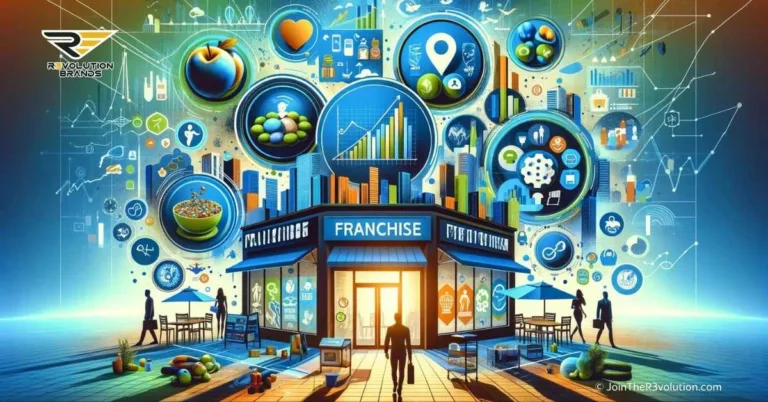In the rapidly evolving landscape of business, the ability to innovate is not just a competitive advantage but often a survival imperative. “Business Creativity and Innovation: Perspectives and Best Practices” are central to shaping the future of organizations.
In this comprehensive guide, we will navigate the fascinating journey of business innovation, from the inception of ideas to their profound impact on the industry. We will explore the nuances of the Innovation Lifecycle, discuss strategies for Overcoming Barriers to Innovation, delve into the role of Technology in Innovation, emphasize the significance of Diversity in Innovation Teams, and uncover the metrics that help in Measuring Innovation Success.
Join us as we embark on a transformative journey where creativity fuels innovation, and innovation drives business excellence.
The Innovation Lifecycle
The innovation journey is not a linear path but a series of interconnected stages, each requiring unique approaches and strategies. Understanding the Innovation Lifecycle is crucial:

- Ideation: This is the birthplace of innovation, where ideas are conceived. Encourage brainstorming sessions, open forums, and creative thinking exercises to foster a culture of idea generation.
- Evaluation: Not all ideas are viable. Rigorously assess ideas against predetermined criteria to identify the most promising ones for further development.
- Development: Here, ideas are transformed into tangible concepts, prototypes, or business models. Iterative refinement and testing are essential to evolve ideas into feasible projects.
- Implementation: This is the execution phase where innovative solutions become part of daily operations. Effective project management and monitoring are critical for a successful implementation.
- Overcoming Barriers to Innovation: Innovation often faces formidable barriers that can stifle creativity. Identifying these obstacles is the first step toward overcoming them:
- Resistance to Change: Employees and stakeholders may resist new ideas due to fear of the unknown. Clear communication, training, and involvement in the innovation process can mitigate resistance.
- Lack of Resources: Innovation may require investments in time, money, and talent. Adequate resource allocation and prioritization of innovation initiatives are essential.
- Cultural Inertia: A culture that does not encourage risk-taking or learning from failures can hinder innovation. Foster a culture that rewards experimentation and values learning from mistakes.
Leveraging Technology for Innovation
In today’s digital age, technology plays a pivotal role in driving innovation. Here’s how businesses can leverage technology:
- Digital Tools: Utilize digital tools and platforms for idea management, collaboration, and project tracking. These tools streamline processes and enhance creative problem-solving.
- Data Analytics: Harness the power of data analytics to gain insights into customer preferences and market trends, guiding innovation efforts toward areas with high potential.
- Automation and AI: Automation and artificial intelligence can optimize processes, freeing up human resources for more creative and strategic tasks.
Building a Diverse Innovation Team
Diversity in perspectives, skills, and experiences is a catalyst for creativity. Here’s why it matters:
- Varied Perspectives: Diverse teams bring a wide range of viewpoints, increasing the likelihood of unique and innovative ideas.
- Cross-functional collaboration: Teams with diverse skills can approach problems from multiple angles, leading to more comprehensive solutions.
- Market Relevance: A diverse team is better equipped to understand and cater to diverse customer segments.
Measuring Innovation Success
Measuring the impact of innovation is essential for continuous improvement. Key metrics and indicators include:
- Revenue Growth: Innovations that drive revenue growth are a clear indicator of success.
- Customer Satisfaction: High levels of customer satisfaction resulting from innovations can be a strong measure of their success.
- Time-to-Market: The speed at which innovations are brought to market can indicate efficiency and competitiveness.
- Employee Engagement: Innovations that boost employee engagement and morale often lead to improved business performance.
Navigating the Journey of Business Innovation
The journey from idea to impact in business innovation is an exhilarating one, filled with challenges and opportunities. Embracing the Innovation Lifecycle, tackling barriers, harnessing technology, fostering diversity, and measuring success are essential components of a thriving innovation ecosystem.
In a world where change is constant, businesses that prioritize creativity and innovation not only survive but also flourish. As you embark on your innovation journey, remember that the path to impact begins with a single idea, and with the right strategies and determination, that idea can transform into a catalyst for business excellence.
Innovation is not a destination; it’s an ongoing process. It’s a mindset that embraces change, seeks improvement, and constantly pushes boundaries. By nurturing a culture of innovation, organizations can position themselves as industry leaders, pioneers, and change-makers.
The journey of innovation is not always easy, but it is undeniably rewarding, paving the way for a brighter and more innovative future for businesses and industries alike.





